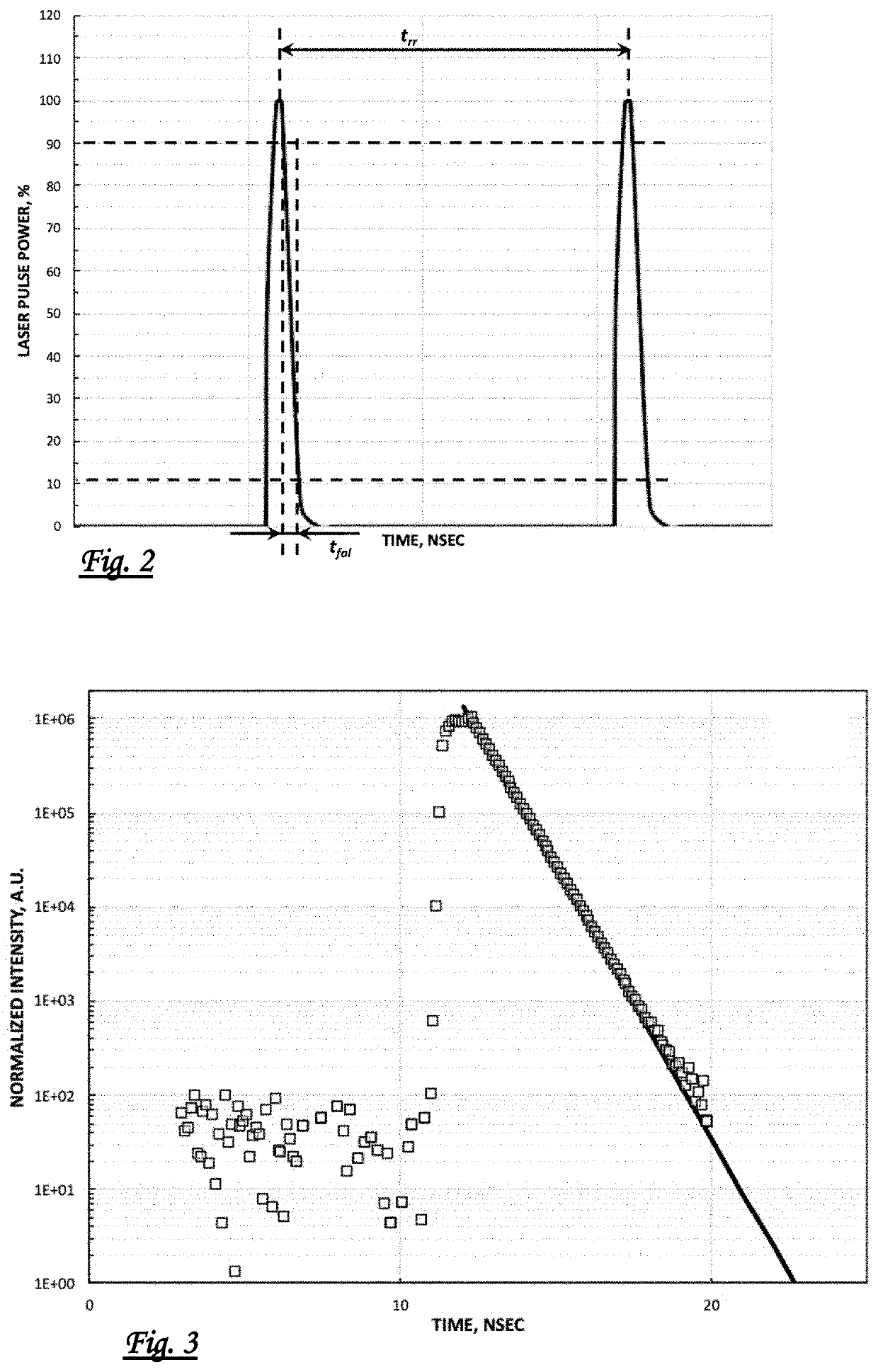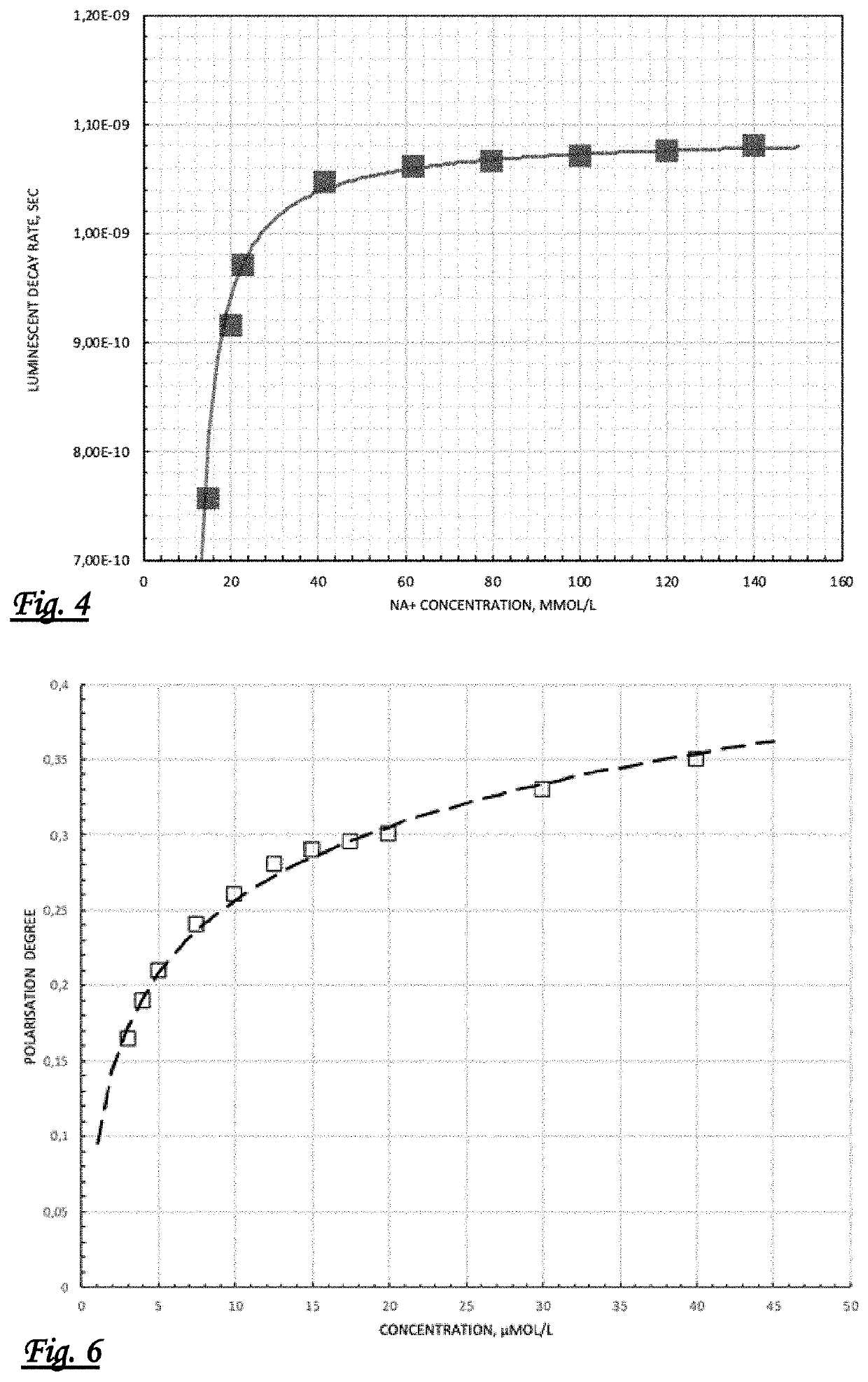Method and Optode for Determining the Concentration of an Analyte in a Sample Liquid
a technology of analyte concentration and sample liquid, which is applied in the direction of analysis by subjecting materials to chemical reactions, material testing goods, instruments, etc., can solve the problems of high cost, high resolution spectrometer, and severe restrictions on the usability of ph determination
- Summary
- Abstract
- Description
- Claims
- Application Information
AI Technical Summary
Benefits of technology
Problems solved by technology
Method used
Image
Examples
Embodiment Construction
"d_n">[0039]Insofar as the following description of the figures refers to a sensor element or a sensor sub-element, this element has a carrier unit having immobilized molecules of a sensor dye sensitive to the analyte or is formed from such a carrier unit.
[0040]A first sensor device 1 has a sample container 2, a pulsed light source 3, e.g. for laser radiation or LED radiation, and a photon counter 4. In the lower region of the sample container 2, preferably inside the sample container 2, a first sensor element 5 is located, the surface of which is intended to come into direct contact with the sample liquid to be analyzed (not shown here). The sensor element 5 has a carrier unit made of a functionalized polymer in which a sensor dye sensitive to the analyte is immobilized and which is hydrogenated when the sample liquid to be analyzed is fed in. The analyte particles penetrate the sensor element 5 such that the sensor dye's immobilized molecules can interact with the analyte particle...
PUM
 Login to View More
Login to View More Abstract
Description
Claims
Application Information
 Login to View More
Login to View More - R&D
- Intellectual Property
- Life Sciences
- Materials
- Tech Scout
- Unparalleled Data Quality
- Higher Quality Content
- 60% Fewer Hallucinations
Browse by: Latest US Patents, China's latest patents, Technical Efficacy Thesaurus, Application Domain, Technology Topic, Popular Technical Reports.
© 2025 PatSnap. All rights reserved.Legal|Privacy policy|Modern Slavery Act Transparency Statement|Sitemap|About US| Contact US: help@patsnap.com



